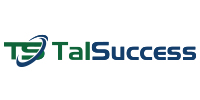- The importance of coaching and feedback for performance and alignment
- Coaching and feedback models and techniques
- Goal-setting
- Assessing progress and reviewing milestones
- Planning next steps
- Providing support
Coaching and Feedback for Performance: Themes and Objectives
Themes
Objectives
- Instill desire to be a coach (and to be coached)
- Build the skills and practice the techniques of coaching and feedback
- Improve performance of self and others
- Create an environment of candour and transparency
Coaching and Feedback for Performance: Guiding Model
The Steps to Effective Coaching
Goal Setting
Supporting the Action
Planning the Next Steps
Assessing Current Progress
Coaching and Feedback for Performance: Module Outline
The Steps to Effective Coaching
Day One Feedback & Goal-Setting
Coaching and Feedback Models and Techniques
Demonstrating and practicing with clear, simple models for providing feedback and coaching the team.
Goal Setting
Discussing and practicing using goals as a tool for conversation, commitment and improvement.
Day Two Progress, Planning & Support
Assessing Progress and Planning Next Steps
Conducting follow-up conversations to measure progress against earlier goals and milestones, and planning how to continue development.
Providing Support
Establishing systems-wide mechanisms for supporting development efforts. Approaches vary from direct assistance and teaching to creating routines and removing obstacles.
Coaching and Feedback Models and Techniques
One of the most important, and most overlooked responsibilities of managers is developing their staff through coaching and feedback. In this session, participants employ the GAPS model, along with other tools, to practice the skills of coaching and feedback. Multiple scenarios are examined. Here, and throughout the two days, role plays are video-taped for participants to review and to facilitate group feedback.
Goal Setting
When it comes to achieving desired levels of performance, goals and effective goal-setting are among managers’ greatest tools. Participants quickly review the principles of creating effective goals, then move promptly into more practice sessions, using goal setting as the context for video-taped role plays. In these role-plays, participants will learn how to use goal-setting conversations as a way to gain employee’s commitment .
Assessing Progress and Planning Next Steps
It is not enough for managers to have a single conversation about goals or to provide feedback just once. These are tools that are used repeatedly and over extended periods of time. Participants in this session continue their practice by rehearsing the kinds of follow-on conversations required to create long-term success and performance. This means applying the same models used on Day One to extend the learning .
Providing Support
Many managers who are successful at providing helpful one-on-one development conversations nevertheless fail to provide the other kinds of support needed to generate long-term growth in their employees. In this session, participants learn a range of approaches for creating a system of support to employees. Establishing effective routines and removing obstacles to success are among the toolkit needed for any manager to become truly effective in development employees and enabling performance.


